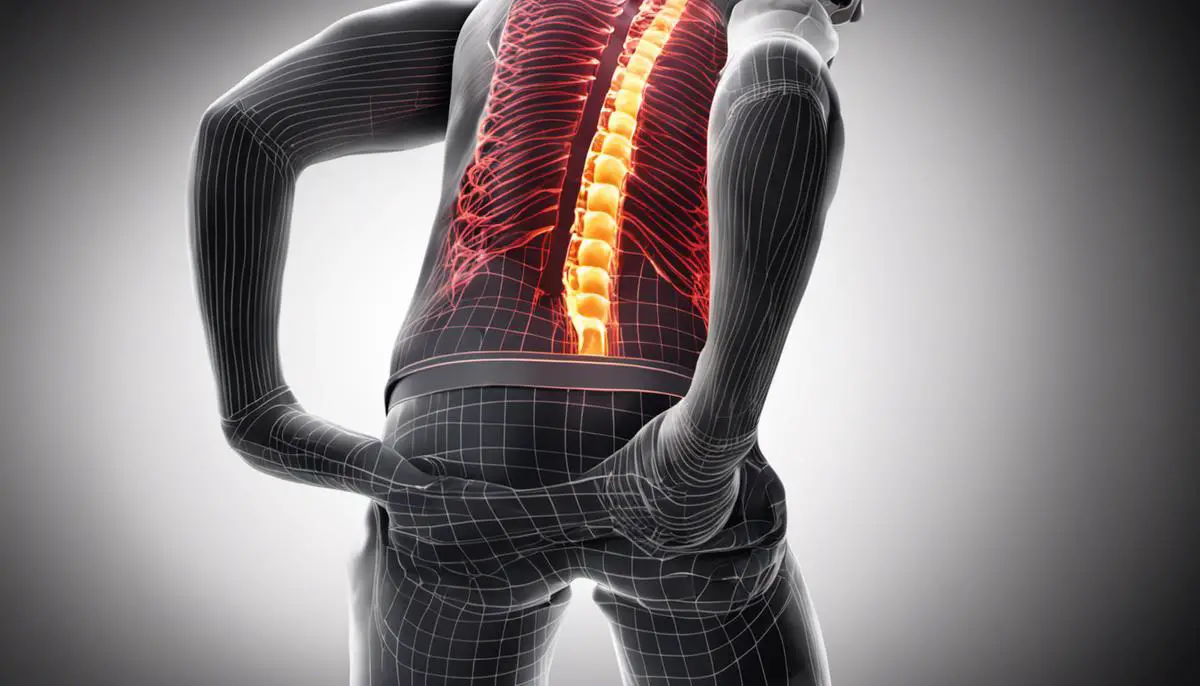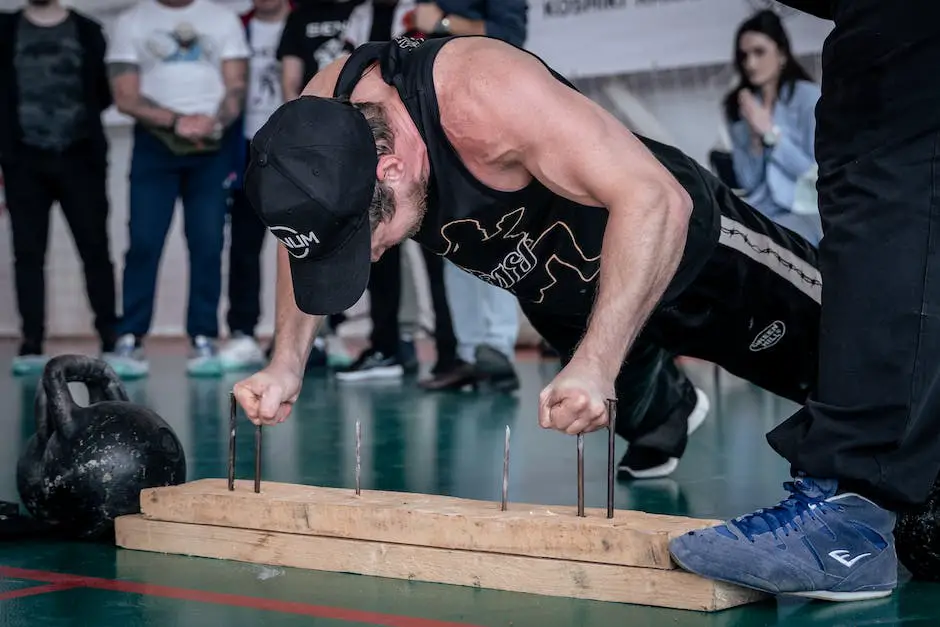Lower back pain is a common ailment that can severely impact an individual’s day-to-day life, with myriad causes and symptoms that can complicate its management. The complex nature of lower back pain often requires a multifaceted approach to treatment and comprehensive understanding can significantly enhance pain mitigation strategies. However, among the myriad of treatment options, exercise remains a vital component. Exercise can be a powerful tool to combat lower back pain, with specific workouts designed to strengthen muscles, stabilize the core, and increase flexibility. However, as with every form of treatment, it’s crucial to approach these exercises with proper knowledge and technique to prevent injury and maximize effectiveness.
Understanding Lower Back Pain
Understanding Lower Back Pain: Causes
Lower back pain is a common ailment that can be caused by a variety of factors. One of the most common causes is physical strain due to heavy physical activity, poor posture, or repetitive movements. The strain can lead to muscle or ligament damage in the lower back, causing discomfort and pain. Other causes can include conditions such as arthritis, osteoporosis, herniated disks, or certain diseases such as cancer or kidney infections. It is also worth noting that psychological stress can exacerbate physical causes of lower back pain.
Recognizing Symptoms of Lower Back Pain
Symptoms of lower back pain can range from mild to severe. The most common sign is a persistent ache or stiffness anywhere along your spine, from the base of your neck to your tailbone. The pain could be sharp or dull, constant or intermittent. It might worsen with physical activity, after prolonged sitting, during the night, or after certain movements such as bending or lifting. Symptoms can also include numbness or tingling in the back, buttocks, or legs.
Best Medical Practices for Lower Back Pain
Medical practices for managing lower back pain can vary depending on the cause and severity of the condition. For milder forms of the condition, non-prescription remedies such as rest, ice and heat treatments, over-the-counter pain relief, and gentle stretching exercises can be effective.
If the pain persists and becomes more intense, medical professionals may recommend physical therapy, prescription medications, other complementary therapies like chiropractic care or acupuncture, or, in severe cases, surgery. It’s crucial to communicate regularly with your healthcare provider to monitor your symptoms and adjust your treatment plan as necessary.
Mitigating Lower Back Pain with Exercise
Exercise plays a crucial role in both preventing and managing lower back pain. Regular physical activity strengthens your back, stomach, and leg muscles, which supports your spine and can help prevent injuries. For those already experiencing back pain, certain exercises can help alleviate the discomfort.
Start with gentle stretching exercises, then gradually add in strength training and low-impact aerobic exercise. Some examples of beneficial exercises are pelvic tilts, cat-cow stretches, press-up back extensions, knee-to-chest stretches, and hamstring stretches.
Before starting any new exercise routine for lower back pain, consult with your healthcare provider or a physical therapist to ensure the approach is safe and suitable for you. Progress slowly, listen to your body, and never force a movement that causes pain. By understanding your lower back pain and implementing an appropriate exercise routine, you can manage and mitigate the discomfort effectively.

Principles of Exercise for Pain Relief
Understanding the Role of Exercise in Lower Back Pain Relief
Exercise plays a significant role in relieving lower back pain, primarily through muscle strengthening, core stabilization, and flexion exercises. Muscle strengthening exercises target the individual muscle groups in the back, helping to increase their resilience and reduce their vulnerability to strain and injury. By strengthening the muscles in your lower back, you increase their ability to support the spine, thereby reducing the pressure on the individual vertebrae and the discs in between.
Core stabilization exercises, on the other hand, are designed to strengthen the muscles that contribute to the stability of the spine, specifically the abdominal muscles, obliques, and the muscles of the lower back. A strong core equates to a stable, supported spine, which in turn decreases the likelihood of pain or injury.
Flexion exercises, such as knee-to-chest stretches, help create space between the vertebrae and relieve pressure on the nerves, which can alleviate pain. They can also increase the flexibility of the lumbar region, enhancing the spine’s range of motion and reducing stiffness that can lead to discomfort.
The Science Behind Lower Back Pain Relief Through Exercise
There’s considerable scientific evidence to back the beneficial effects of these exercises on lower back pain. Our muscles function like a support system for the spine. When they’re weak or imbalanced, the spine loses its structural support, leading to strain, pain, or injury.
Exercises aimed at strengthening and stabilizing the core muscles promote a better balanced and supported spinal column. Similarly, exercises that create vertebral space can decrease nerve impingement, a common cause of lower back pain.
In addition, physical activity and exercise have been shown to increase blood flow, promoting healing to the affected area, and reducing inflammation by releasing endorphins, the body’s natural painkillers.
The Importance of Controlled Intensity and Progression in Pain Relief Exercises
While exercise is important in promoting back health and alleviating pain, it’s crucial to approach it with care. Starting slow and gradually increasing the intensity of your workouts reduces the risk of exacerbating your condition or causing new injuries.
If you’re new to exercise or have been inactive for a while, consider starting with low-impact core strengthening and flexibility exercises. These may include slow, controlled movements like pelvic tilts, knee-to-chest stretches, or brief walks.
As your fitness level improves, gradually increase the intensity and duration of the exercises. Listen to your body – if you experience pain, ease off or stop the exercises.
Another key factor in a pain relief exercise routine is consistency. It’s better to do a little bit of exercise every day than a lot in one session but then not again for several days. A regular routine of activities not only contributes to muscle strength and endurance but also helps maintain your flexibility and range of motion.
Always remember to check with your healthcare provider before starting any exercise routine, to make sure it’s safe based on your specific health condition and fitness level. They can provide more specific guidance and even refer you to a physical therapist for personalized advice and instruction.

Specific Exercises for Lower Back Pain Relief
Pelvic Tilt Exercise for Lower Back Pain
A pelvic tilt exercise can help to strengthen your lower back muscles and minimize lower back pain. Here’s how to do it:
- Lie on your back with your knees bent and your feet flat on the floor.
- Pull in your abdomen so that your belly button moves toward your spine.
- Flatten your lower back on the floor by gently pressing your hips down.
- Hold this position for 5 to 10 seconds.
- Release and go back to your starting position.
Medical professionals recommend performing this exercise 10 to 15 times per day.
Cat-Camel Exercise
The Cat-Camel exercise is specifically designed to mobilize the spine and stretch both the back and abdomen which can alleviate lower back pain.
- Begin in a table top position, being on all fours with your hands beneath your shoulders.
- Arch your back upward like a frightened cat, hold for 5-10 seconds.
- Then let your back sag down like a camel hump, hold for 5-10 seconds.
- Repeat this alternating series for 5-10 times.
The suggested frequency is to do this exercise at least once a day.
Bridge Exercise
Bridge exercise targets your glutes and lower back, helping to strengthen those muscles and alleviate lower back pain.
- Lie on your back with your hands by your sides, knees bent, and feet flat on the floor under your knees.
- Tighten your stomach and buttock muscles, then raise your hips to create a straight line from your knees to your shoulders.
- Try to hold this position for about five to ten seconds.
- Slowly lower your hips back to the floor and rest for 10 seconds.
- Repeat this exercise for 10-15 times.
Health professionals recommend doing this exercise once a day.
Stretching Hamstrings
Tight hamstrings can exacerbate lower back pain. As much as possible, they should be included in your exercise routine.
- Sit on the floor with both legs straight out in front of you.
- Bend one knee and place your heel towards your other leg.
- Lean forward from your hips reaching for your toes until you feel a stretch in the back of your thigh.
- Maintain this stretch for 20-30 seconds before switching to your other leg.
Do this stretching exercise twice for each leg daily.
Child’s Pose
This yoga position aids to elongate and align your spine, kicking off tension from your body making it an ideal exercise for lower back pain relief.
- Start by kneeling on a comfortable mat.
- Move your hips back until they are resting on, or between, your feet.
- Lower your forehead to the ground.
- Reach your arms forward as far as you can.
The Child’s Pose should be held for 1 to 3 minutes and can be performed up to three times daily.

Understanding how exercise can help alleviate lower back pain and knowing the specific exercises approved by medical professionals is a significant step in managing and overcoming this common ailery. Key considerations include maintaining gradual increases in difficulty, strength building, core stabilization, and flexion exercises. Pain is a complex, multifaceted experience that can have a significant effect on one’s quality of life, but with the right information and commitment to physical health, it is possible to mitigate its effects. Remember, consistent practice and patience with these exercises are critical for achieving the desired results. Seek a health professional’s guidance when starting or modifying any exercise routine to ensure it is safe and adapted to your individual needs and condition.
